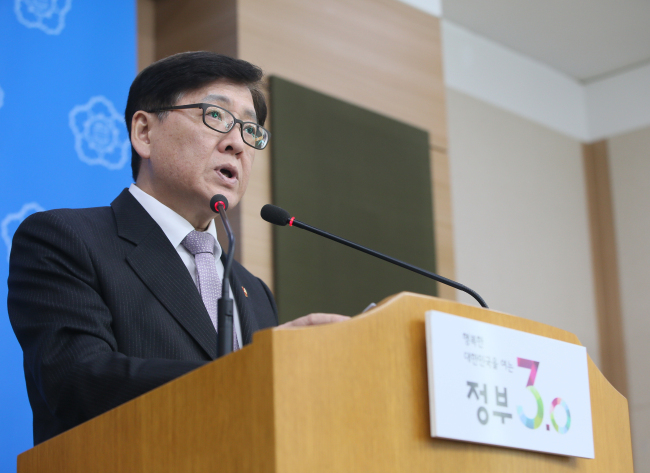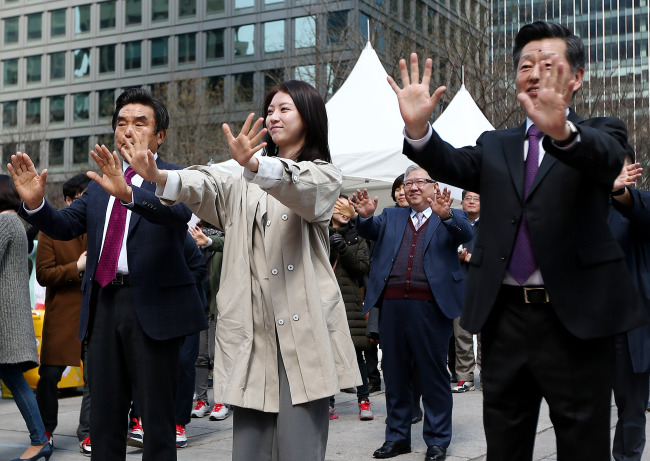South Korean health authorities said Thursday all Koreans are now required to be tested for latent tuberculosis at least twice in their lives, at ages 15 and 40, as a part of measures to drop the high prevalence rate of the infectious disease in the country.
According to the World Health Organization, over 95 percent of TB cases and deaths occur in developing countries. South Korea, the fourth-largest economy in Asia, has the highest incidence rate of TB among members of the Organization for Economic Cooperation and Development, partly due to the lack of epidemiological research of the disease since the Korean War (1950-53).
According to the World Health Organization, over 95 percent of TB cases and deaths occur in developing countries. South Korea, the fourth-largest economy in Asia, has the highest incidence rate of TB among members of the Organization for Economic Cooperation and Development, partly due to the lack of epidemiological research of the disease since the Korean War (1950-53).

“We estimate that some 400 Koreans have been infected with TB since after the Korean War,” said Health Minister Chung Chin-youb at a press meeting in Seoul.
“Although state-run health centers performed epidemiological research very thoroughly after the war, things became different after we introduced our national health insurance system in 1989. When the new system took effect, many state-run health centers were replaced by private clinics that focused on treatments rather than epidemiological research on infectious diseases.”
The Health Ministry aims to drop the prevalence rate of the disease to 12 patients per 100,000 people, which is the OECD average. In 2014, South Korea marked a TB incidence rate of 86 patients per 100,000, seven times higher than the average rate of the developed nations.
The newly introduced measure requires all Koreans to get tested for latent TB -- a condition in which the TB bacteria is in the body but inactive and causing no symptoms -- at least twice in their lives. The first test should be taken at age 15, with the second at 40. Without treatment, about 5 to 10 percent of latent TB patients are known to develop TB some time in their lives.
“Although state-run health centers performed epidemiological research very thoroughly after the war, things became different after we introduced our national health insurance system in 1989. When the new system took effect, many state-run health centers were replaced by private clinics that focused on treatments rather than epidemiological research on infectious diseases.”
The Health Ministry aims to drop the prevalence rate of the disease to 12 patients per 100,000 people, which is the OECD average. In 2014, South Korea marked a TB incidence rate of 86 patients per 100,000, seven times higher than the average rate of the developed nations.
The newly introduced measure requires all Koreans to get tested for latent TB -- a condition in which the TB bacteria is in the body but inactive and causing no symptoms -- at least twice in their lives. The first test should be taken at age 15, with the second at 40. Without treatment, about 5 to 10 percent of latent TB patients are known to develop TB some time in their lives.

“With proper treatment, latent TB patients can avoid developing TB by up to 90 percent,” said Minister Chung.
According to the Korea Centers for Disease Control and Prevention, no developed nation currently requires all citizens to be tested for latent TB. However, Japan and the U.S. made it mandatory for young children to be tested for the disease from 1965-2002, and 1960-1990, respectively.
“Japan also struggled with TB after World War II,” Kwon Joon-wook, who heads the Health Ministry’s bureau of public health policy, told The Korea Herald.
“The number of newly diagnosed latent TB patients decreased significantly throughout 1965-2002, after requiring all children to get tested twice, at age 7 and 13.”
South Korea has recently seen a number of TB cases occurring at facilities with a large number of people, such as schools and postpartum centers. Last year, TB cases were reported in 974 schools, 332 military bases and 91 day care centers and postpartum care facilities.
While the number of newly diagnosed TB patients here last year was the lowest in 15 years, new TB patients between 10 and 14 years old increased over the same period.
“South Korea is cornered by countries where the incidence of drug-resistant isolates is the highest in the world: India, China, Russia and North Korea,” said Dr. Vincent Delorme from the Seoul-based Institut Pasteur Korea. “With the increase in tourism and ease of travel, combined with the fact that TB is an extremely contagious disease, it is not surprising to see more and more drug-resistant strains circulating in Korea.”
The medical researcher also said there is a lack of genomic information regarding TB isolates circulating in South Korea, which makes the epidemiologic studies incomplete.
At the same time, Delorme said bacilli has become resistant to more than 10 available TB drugs in South Korea. This means that only drugs that have been introduced in recent years are now effective, he added.
By Claire Lee (dyc@heraldcorp.com)
According to the Korea Centers for Disease Control and Prevention, no developed nation currently requires all citizens to be tested for latent TB. However, Japan and the U.S. made it mandatory for young children to be tested for the disease from 1965-2002, and 1960-1990, respectively.
“Japan also struggled with TB after World War II,” Kwon Joon-wook, who heads the Health Ministry’s bureau of public health policy, told The Korea Herald.
“The number of newly diagnosed latent TB patients decreased significantly throughout 1965-2002, after requiring all children to get tested twice, at age 7 and 13.”
South Korea has recently seen a number of TB cases occurring at facilities with a large number of people, such as schools and postpartum centers. Last year, TB cases were reported in 974 schools, 332 military bases and 91 day care centers and postpartum care facilities.
While the number of newly diagnosed TB patients here last year was the lowest in 15 years, new TB patients between 10 and 14 years old increased over the same period.
“South Korea is cornered by countries where the incidence of drug-resistant isolates is the highest in the world: India, China, Russia and North Korea,” said Dr. Vincent Delorme from the Seoul-based Institut Pasteur Korea. “With the increase in tourism and ease of travel, combined with the fact that TB is an extremely contagious disease, it is not surprising to see more and more drug-resistant strains circulating in Korea.”
The medical researcher also said there is a lack of genomic information regarding TB isolates circulating in South Korea, which makes the epidemiologic studies incomplete.
At the same time, Delorme said bacilli has become resistant to more than 10 available TB drugs in South Korea. This means that only drugs that have been introduced in recent years are now effective, he added.
By Claire Lee (dyc@heraldcorp.com)


![[AtoZ into Korean mind] Humor in Korea: Navigating the line between what's funny and not](http://res.heraldm.com/phpwas/restmb_idxmake.php?idx=644&simg=/content/image/2024/04/22/20240422050642_0.jpg&u=)
![[Exclusive] Korean military set to ban iPhones over 'security' concerns](http://res.heraldm.com/phpwas/restmb_idxmake.php?idx=644&simg=/content/image/2024/04/23/20240423050599_0.jpg&u=20240423183955)


![[Herald Interview] Why Toss invited hackers to penetrate its system](http://res.heraldm.com/phpwas/restmb_idxmake.php?idx=644&simg=/content/image/2024/04/22/20240422050569_0.jpg&u=20240422150649)
![[Graphic News] 77% of young Koreans still financially dependent](http://res.heraldm.com/phpwas/restmb_idxmake.php?idx=644&simg=/content/image/2024/04/22/20240422050762_0.gif&u=)






![[Exclusive] Korean military to ban iPhones over security issues](http://res.heraldm.com/phpwas/restmb_idxmake.php?idx=652&simg=/content/image/2024/04/23/20240423050599_0.jpg&u=20240423183955)



![[Today’s K-pop] Ateez confirms US tour details](http://res.heraldm.com/phpwas/restmb_idxmake.php?idx=642&simg=/content/image/2024/04/23/20240423050700_0.jpg&u=)